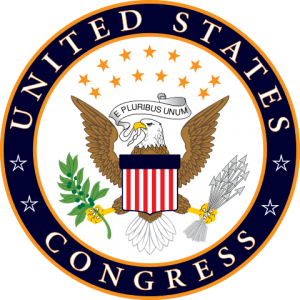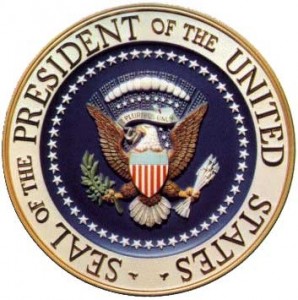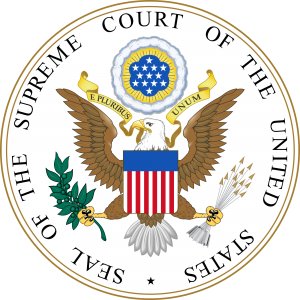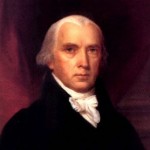 The Founding Fathers were extremely suspicious of the concentration of government power in a single person or small group of people. To protect against concentrated power they designed the Constitution to separate the powers of government into three branches: legislative, executive and judicial, and divided sovereignty between the federal government and the states. For the Founders, Separation of Powers and American Federalism were not enough protection for the people’s liberty.
The Founding Fathers were extremely suspicious of the concentration of government power in a single person or small group of people. To protect against concentrated power they designed the Constitution to separate the powers of government into three branches: legislative, executive and judicial, and divided sovereignty between the federal government and the states. For the Founders, Separation of Powers and American Federalism were not enough protection for the people’s liberty.
Often confused with Separation of Powers, the system of Checks and Balances further divides power to keep the government in check. While each branch is prominent in its area, there are overlapping powers to keep each branch from becoming tyrannical in its area. These overlapping powers are the checks that balance.
The Congress has the most checks on the other branches. The first and perhaps most important is the power of the purse. Unless Congress provides money to the executive and the judicial, neither has the resources to act. Congress has institutional checks on both other branches.
Congressional checks on the Executive Branch
- Power of the Purse
- Power of the House of Representatives to Impeach the President
- Power of the Senate to Remove the President following Impeachment
- Power of the Senate to reject presidential appointments
- Power to investigate activities and officers of the executive branch
- Power to override presidential veto
- Power to refuse passage of laws recommended by the president
- Power of the Senate to reject presidential treaties
- Sole power to declare war
Congressional checks on the Judicial Branch
- Power to impeach and remove judges
- Power of the Senate to reject judicial nominees
- Power to create or disband courts
- Power to define the type of cases courts can decide
- Power to set the number of justices on the Supreme Court
- Power to pass new laws to override court decisions not based on the Constitution
- Power to propose amendments to override court decisions based on the Constitution
 Executive Checks on the Congress
Executive Checks on the Congress
- President has the power to veto laws passed by Congress
- President has the power to call Congress into session
- Vice-President has the power to break tie votes in the Senate
- President chooses the officials to carry out the laws passed by Congress
- Presidential action required to carry out laws passed by Congress
Executive Checks on the Judiciary
- President nominates members of the Supreme Court
- President nominates all other federal judges
- Presidential action required to enforce court decisions
 Judicial Checks on Congress and Executive
Judicial Checks on Congress and Executive
- Judicial power to declare acts of Congress or the Executive unconstitutional
- Judicial power to review actions of executive agencies for compliance with law
- Judicial power to interpret all laws
- Judicial power to issue warrants for executive investigations and criminal arrests
- Judicial authority to preside at impeachment trials, with Chief Justice as presiding officer in a case of presidential impeachment.
Checks and Balances at Work
The passing and operation of federal laws demonstrates checks and balances in action. First, a member of Congress introduces a bill. If the bill is approved by both the Senate and House, it then goes to the executive branch. The president determines if he agrees with the bill passed by Congress. If he agrees, he signs it and the bill becomes a law.
If the President is not in agreement, he vetoes the bill. The president’s veto is not the final say. If two-thirds of both Houses vote to override the veto, the legislative branch can exercise its check on the president. The bill becomes law over the president’s objections.
Once a law is in place, either with the president’s signature or by congressional override, the law may then be reviewed by the judicial branch, when someone brings a proper case to court. The judicial branch considers lawsuits brought by people affected by the law. Based upon the arguments of people affected by the law there is a judicial decision. The losing side may appeal to a higher court according to the court system established by Congress. The case may ultimately reach the Supreme Court. When there is a final decision, it becomes the duty of the executive branch to enforce the decision.
If Congress does not agree with the judicial branch’s interpretation or the executive branch’s enforcement of the law, it may introduce a new piece of legislation. When a law acts upon American citizens, all three branches have a role to play, and no role is entirely independent of the other branches. They act as checks on each other in a design to meet the principle goal of the Constitution’s Preamble: “to secure the blessings of liberty…”
 The Role of Private Citizens as a Check on Government
The Role of Private Citizens as a Check on Government
It is of note that private citizens have an important role in the “checks and balances”. This is in keeping with Federalist No. 51, by James Madison, titled: The Structure of the Government Must Furnish the Proper Checks and Balances Between the Different Departments. On the role of the citizen Madison explains:
“…the constant aim is to divide and arrange the several offices in such a manner as that each may be a check on the other that the private interest of every individual may be a sentinel over the public rights.”
To read this entry in Spanish: El sistema de controles y contrapesos, para proteger la libertad más allá de la separación de poderes Parte 1






[…] Click Here! […]